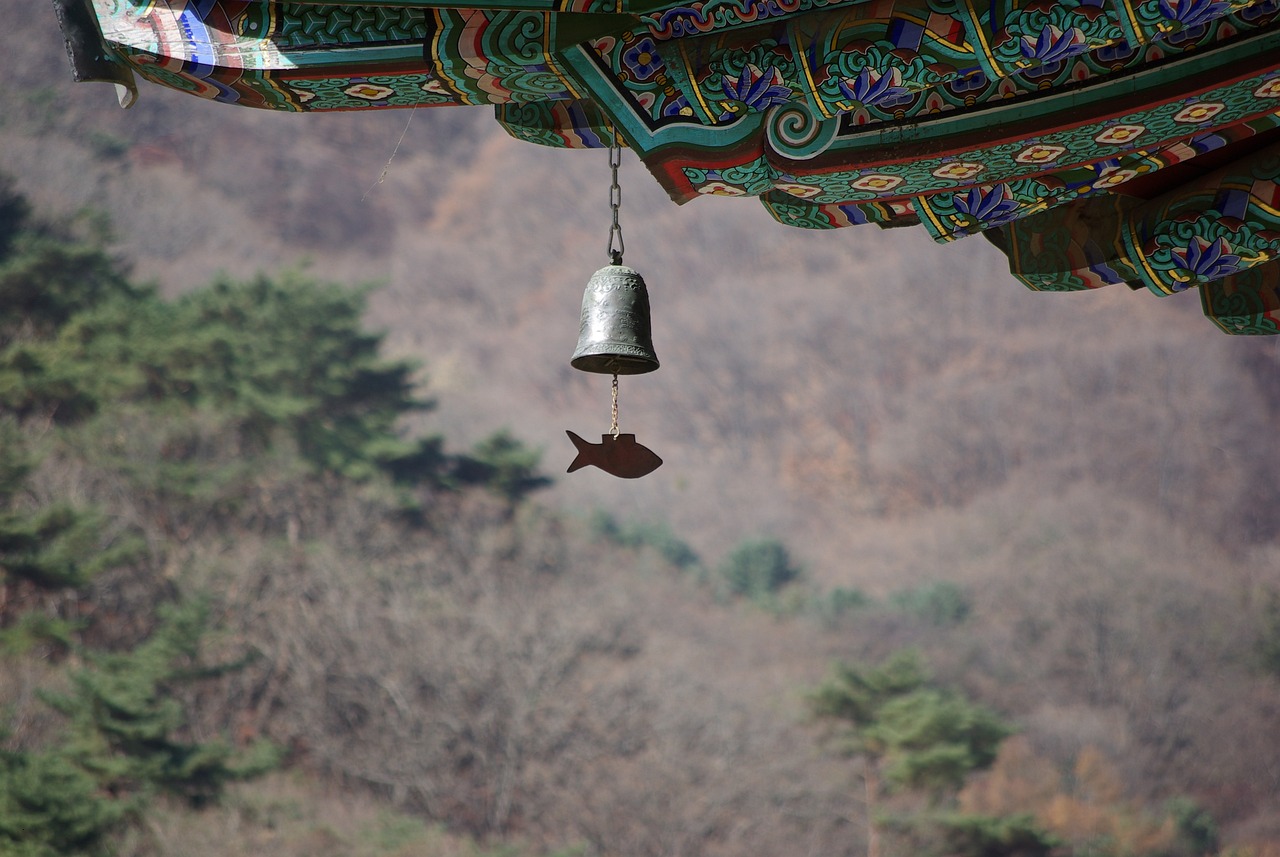Crafting Beautiful Wind Chimes with Shells
Have you ever heard the gentle tinkling of wind chimes dancing in the breeze? It's like nature's own music, a soothing sound that can instantly elevate your outdoor space. In this article, we dive into the art of crafting stunning wind chimes using shells, a project that not only enhances your garden or porch but also allows you to express your creativity. Imagine hanging a piece of the ocean right in your backyard! As we explore the materials, techniques, and design ideas, you'll discover how easy and rewarding it is to create your own melodic masterpiece.
Wind chimes have a rich history and are often associated with good luck and positive energy in many cultures. By using shells, which come in an array of shapes, sizes, and colors, you can create a unique piece that resonates with your personal style. Whether you're drawn to the calming sounds of the ocean or simply want to add an artistic touch to your home, crafting shell wind chimes is an engaging way to connect with nature and unleash your artistic flair.
Throughout this article, we will guide you through the process, from selecting the right shells to assembling your wind chime and even personalizing it to make it truly yours. So, gather your materials and let’s embark on this creative journey together! Get ready to turn simple shells into a beautiful symphony of sound that will enchant you and your guests alike.
When it comes to crafting wind chimes, the shells you choose can significantly impact both the visual appeal and the sound quality of your creation. It's essential to select shells that not only look beautiful but also produce pleasant sounds when they collide. Different types of shells have unique characteristics that make them suitable for crafting. For instance, larger shells often create deeper, more resonant tones, while smaller shells may produce higher, tinkling sounds.
As you begin your selection process, consider visiting local beaches, craft stores, or online shops to find a variety of shells. You might be surprised by the diversity available! Some popular choices include:
- Conch Shells: Known for their beautiful spiral shape and rich tone.
- Scallop Shells: Their flat surfaces create a light, tinkling sound.
- Clam Shells: These can produce a deeper, more resonant sound when struck together.
Remember, the key is to choose shells that resonate with you personally, as they will become a part of your outdoor space and your life.
Before diving into the crafting process, it's crucial to gather all the necessary materials and tools. Here's a quick checklist to ensure you're fully equipped:
- Shells: Your primary material, choose a variety of shapes and sizes.
- Cord or String: This will hold your shells together; choose durable options like nylon or fishing line.
- Base Material: A sturdy piece to hang your shells from, such as a wooden dowel or a metal ring.
- Tools: Scissors, pliers, and a drill (if necessary for making holes in shells).
Having everything on hand will make the crafting process smoother and more enjoyable. Once you're set, you’ll be ready to start creating your own beautiful wind chimes!
Q: What types of shells are best for wind chimes?
A: Popular choices include conch, scallop, and clam shells due to their unique sounds and visual appeal.
Q: How do I ensure my wind chime is durable?
A: Use strong cords and secure knots to attach your shells. Additionally, consider using a sturdy base for stability.
Q: Can I personalize my wind chime?
A: Absolutely! You can add beads, charms, or even paint your shells to make your wind chime uniquely yours.
Q: Where can I find shells for my project?
A: You can source shells from local beaches, craft stores, or online retailers specializing in crafting materials.

Choosing the Right Shells
When it comes to crafting stunning wind chimes, is absolutely essential. Not only do they contribute to the overall aesthetic of your creation, but they also play a pivotal role in the sound it produces. Imagine walking outside and being greeted by the gentle tinkling of shells swaying in the breeze – it's a beautiful symphony that can transform your outdoor space. But how do you select the perfect shells? Let's dive into some key considerations that can help you make the best choices.
First and foremost, you should consider the type of shells you want to use. Different shells come with unique shapes, sizes, and colors, which can significantly affect both the visual appeal and the sound quality of your wind chime. For instance, larger shells like conch shells not only make a bold statement but also produce deeper, resonant tones. On the other hand, smaller shells, such as scallops, create a lighter, more delicate sound. It's all about finding the right balance that suits your personal style and the atmosphere you wish to create.
Next, think about the acoustic properties of the shells. The way shells interact with each other when they collide is crucial for achieving the desired melody. Some shells have a more hollow structure, allowing them to resonate beautifully, while others may produce a more muted sound. To help you understand the differences, here's a quick overview of some common shell types and their sound characteristics:
| Shell Type | Sound Quality | Visual Appeal |
|---|---|---|
| Conch | Deep and resonant | Large, spiral shape |
| Scallop | Light and tinkling | Fan-shaped, colorful |
| Clam | Soft and mellow | Round, smooth surface |
Additionally, consider the color and texture of the shells you choose. A vibrant mix of colors can add a playful touch to your wind chime, while natural, muted tones can create a more serene and organic feel. You might even want to mix and match various textures, combining smooth shells with rougher ones for a visually dynamic effect. Don't hesitate to let your creativity run wild – after all, this is your chance to express yourself!
Lastly, think about where you can source these shells. You might find them on your local beach, at craft stores, or even online. Beachcombing can be a fun adventure, and it allows you to connect with nature. Just remember to be mindful of the environment and only collect shells that are not inhabited by marine life. If you're opting for store-bought shells, ensure they are ethically sourced to support sustainable practices.
In conclusion, choosing the right shells for your wind chime is a delightful process that combines aesthetics, sound, and personal expression. By considering the type, acoustic properties, color, texture, and sourcing methods, you can create a wind chime that not only sounds beautiful but also looks stunning. So, gather your materials, unleash your creativity, and let the soothing sounds of your handcrafted wind chime fill your outdoor space!

Essential Materials and Tools
Creating stunning wind chimes with shells is not just an art; it's a delightful journey that begins with gathering the right materials and tools. Imagine standing on a sun-kissed beach, the salty breeze in your hair, and the sound of waves crashing in the background. That’s the vibe you want to channel as you embark on this creative project! To kick things off, you’ll need a selection of beautiful shells, which are the stars of your wind chime. But what else do you need? Let’s dive into the essentials!
First and foremost, your choice of shells will set the tone for both the aesthetics and the sound of your wind chime. You'll want to select various types—think conch, scallop, and clam shells. These not only vary in size and shape but also in the unique sounds they produce when they clink together. So, it’s like picking the instruments for your very own symphony! Alongside shells, you’ll need a sturdy cord or string to attach them. This is where you can get creative; consider using fishing line for a nearly invisible look or colorful twine to add a pop of personality.
Next up, let’s talk tools. You’ll need a few basic items to make your crafting experience smooth and enjoyable. Here’s a quick rundown of what you should have:
- Pliers: These are essential for bending and twisting the wire to secure your shells.
- Scissors: A good pair will help you cut your cord to the desired lengths.
- Drill or Dremel: If your shells don’t have pre-drilled holes, a small drill will help you create them without cracking the shells.
- Measuring Tape: To ensure your shells are spaced evenly and your wind chime hangs perfectly.
Having these tools at your disposal will make the assembly process much easier and more enjoyable. Think of them as your trusty sidekicks on this crafting adventure! But wait, there’s more! You might also want to consider adding some decorative elements like beads or charms. These can serve as beautiful accents that enhance the overall look of your wind chime while also adding to the sound when they jingle. The beauty of crafting is that you can personalize it to reflect your style and personality.
As you gather these materials, remember that the journey of crafting is just as important as the final product. So, take your time, enjoy the process, and let your creativity flow. Before you know it, you'll have a beautiful wind chime that not only looks great but also fills your outdoor space with enchanting sounds. Happy crafting!
Q: What types of shells are best for wind chimes?
A: Popular choices include conch, scallop, and clam shells. Each type offers unique visual and auditory qualities, making them great for crafting.
Q: Can I use artificial shells?
A: Absolutely! Artificial shells can be a great alternative, especially if you're looking for specific colors or designs that natural shells might not provide.
Q: How do I ensure my wind chime is weather-resistant?
A: Use marine-grade materials for your cords and consider sealing your shells with a waterproof spray to protect them from the elements.
Q: How can I make my wind chime more personalized?
A: Incorporate beads, charms, or even painted shells that reflect your personal story or style. This adds a unique touch to your creation!

Shell Types and Their Sounds
When it comes to crafting wind chimes, the type of shells you choose plays a pivotal role in not just the aesthetics but also the musicality of your creation. Each shell has its own unique sound profile, influenced by its size, shape, and material. Imagine standing in your garden, the gentle breeze carrying the soft tinkling of your wind chime, each note resonating with the essence of the ocean. Let’s dive into the fascinating world of shell types and explore how they contribute to the enchanting sounds of wind chimes.
First off, let's talk about conch shells. These beauties are not just visually stunning; they produce a deep, resonant tone that can be quite soothing. The size and spiral shape of conch shells allow them to create a rich melody, reminiscent of waves lapping at the shore. If you're looking for a shell that adds a touch of tranquility to your outdoor space, conch shells are a fantastic choice.
Next up are scallop shells. With their fan-like shape and varied colors, scallops add a delightful visual element to your wind chime. But they don’t just look good; they also create a light, tinkling sound that dances in the air. The sound is often described as cheerful and playful, making scallop shells perfect for creating a whimsical atmosphere in your garden or patio.
Then we have the classic clam shells. These shells are versatile and can produce a variety of sounds depending on how they are arranged. When clams collide, they create a soft, soothing chime that can be both calming and uplifting. Their smooth surfaces reflect light beautifully, adding an extra layer of charm to your wind chimes.
To further illustrate the differences in sound, here’s a simple table that summarizes the characteristics of these popular shell types:
| Shell Type | Sound Quality | Visual Appeal |
|---|---|---|
| Conch Shell | Deep, resonant tone | Spiral shape, often colorful |
| Scallop Shell | Light, tinkling sound | Fan-like shape, vibrant colors |
| Clam Shell | Soft, soothing chime | Smooth surface, various colors |
When selecting shells for your wind chime, consider not just their appearance but also how their sounds will interact with one another. Mixing different types of shells can create a beautiful symphony of tones, transforming your outdoor space into a serene retreat. Think of it as composing a musical piece; each shell is an instrument that contributes to the overall harmony.
In addition to these common types, there are countless other shell varieties to explore. From abalone to oyster shells, each brings its own unique sound and beauty. Don't hesitate to experiment and find the perfect combination that resonates with your personal style and the ambiance you wish to create.
Ultimately, the choice of shells is a deeply personal one. As you embark on this creative journey, let your intuition guide you. Whether you’re drawn to the calming tones of conch shells or the playful chimes of scallops, each choice will contribute to the unique melody of your wind chime. Remember, crafting wind chimes is not just about the end product; it’s about the joy of creation and the beautiful sounds that will fill your outdoor space.
- What types of shells are best for wind chimes?
Conch, scallop, and clam shells are popular choices due to their unique sounds and visual appeal.
- How do I ensure my wind chime sounds good?
Mix different shell types to create a variety of sounds, and pay attention to how they interact when they collide.
- Can I use shells I find on the beach?
Absolutely! Beachcombing is a great way to find unique shells, just make sure they are clean and intact.

Common Shell Varieties
When it comes to crafting stunning wind chimes, the choice of shells is pivotal. Not only do they contribute to the visual allure of your creation, but they also play a significant role in the sound produced when the wind dances through them. Let's dive into some of the most common shell varieties that can elevate your wind chime game.
First up is the Conch shell. With its spiral shape and vibrant hues, the conch shell is a favorite among crafters. Its robust structure produces a deep, resonant sound that can fill your outdoor space with soothing melodies. Imagine the gentle hum of the ocean every time the wind blows! Additionally, conch shells come in various sizes, allowing for versatility in your design.
Next, we have the Scallop shell. Known for its fan-like shape and intricate ridges, scallop shells create a delightful tinkling sound when they collide. They are lighter than conch shells, making them easier to work with, especially if you’re aiming for a more delicate wind chime. The visual appeal of scallop shells, often adorned with beautiful colors and patterns, adds a touch of elegance to your creation.
Another popular choice is the Clam shell. Clam shells are widely appreciated for their smooth surfaces and symmetrical shapes. They produce a soft, gentle sound, perfect for creating a tranquil atmosphere in your garden or patio. Clam shells can also be painted or decorated, allowing for even more personalization in your wind chime design.
Other notable mentions include the Abalone shell, renowned for its iridescent interior, and the Mussel shell, which offers a unique elongated shape. Each type of shell brings its own charm and sound, making the selection process an exciting part of your crafting journey.
| Shell Type | Sound Quality | Visual Appeal |
|---|---|---|
| Conch | Deep and resonant | Vibrant and spiral |
| Scallop | Tinkling | Intricate and fan-like |
| Clam | Soft and gentle | Smooth and symmetrical |
| Abalone | Rich and melodic | Iridescent interior |
| Mussel | Hollow and echoing | Unique elongated shape |
In conclusion, the world of shells is vast and varied. By understanding the characteristics of these common shell varieties, you can select the perfect ones that not only fit your aesthetic but also produce the sounds you desire. So, whether you prefer the deep tones of a conch or the delicate chime of a scallop, your wind chime will surely become a beautiful focal point in your outdoor space.
- What types of shells are best for wind chimes? The best types include conch, scallop, clam, abalone, and mussel shells, each offering unique sounds and visuals.
- Can I use synthetic shells? Yes, synthetic shells can be used, but they may not produce the same acoustic quality as natural shells.
- How do I clean my shells before crafting? Rinse them in warm, soapy water and scrub gently to remove any sand or debris.
- What materials do I need to hang my wind chimes? You will need durable cord or fishing line, a sturdy base, and possibly beads or other decorative elements.

Shell Sourcing Tips
When it comes to crafting your stunning wind chimes, sourcing the right shells can be as thrilling as the final assembly. Think of it as a treasure hunt where each shell tells a story. Whether you’re a beachcombing enthusiast or someone who prefers the convenience of online shopping, there are several avenues to explore. First and foremost, beachcombing is an exhilarating way to find unique shells. If you live near a coastline, grab a bag and head out! Early mornings after a storm can yield some of the best finds, as the tides often bring in new shells. Remember to check local regulations regarding shell collecting to ensure you're not taking anything protected.
If beachcombing isn’t an option for you, don’t fret! The internet is a vast marketplace filled with opportunities. Websites like Etsy or specialized shell shops offer a wide variety of shells, often curated by fellow crafters who understand the needs of DIY enthusiasts. When shopping online, pay attention to the seller’s ratings and reviews to ensure you're getting quality pieces. Additionally, local craft stores often carry shells, especially during the summer months. Visiting these stores can be a delightful experience, as you can physically examine the shells and choose the ones that resonate with your vision.
For those who enjoy a bit of adventure, consider shell fairs or craft shows in your area. These events often feature vendors who specialize in shells and other natural materials. Plus, you might pick up some crafting tips along the way! If you’re looking for specific types of shells, such as conch or scallop, don't hesitate to ask vendors for recommendations or to check their stock. You might just find a hidden gem that perfectly fits your design.
Lastly, remember that the condition of the shells matters. Look for shells that are intact and free from cracks or chips, as these will not only look better but will also produce a cleaner sound when they collide. A good rule of thumb is to select shells that have a nice sheen or vibrant color, as they will enhance the visual appeal of your wind chime. With these tips in mind, you're well on your way to gathering a beautiful collection of shells that will bring your wind chime to life!
Q: Can I use any type of shell for my wind chime?
A: While you can technically use any shell, some shells produce better sounds than others. It’s best to choose shells that are known for their acoustic properties.
Q: Where can I find shells if I don’t live near the ocean?
A: You can find shells at craft stores, online marketplaces, or even at shell fairs and craft shows. Many vendors sell a variety of shells suitable for crafting.
Q: Are there any shells I should avoid using?
A: Avoid using shells that are cracked or broken, as they won’t hold up well and may not produce a pleasant sound. Additionally, some shells may be protected by law, so always check local regulations.
Q: How do I clean the shells before using them?
A: Clean your shells using warm soapy water and a soft brush to remove any dirt or debris. Rinse them thoroughly and let them dry completely before using them in your wind chime.

Designing Your Wind Chime
When it comes to , the possibilities are as vast as the ocean itself! The beauty of crafting a wind chime lies not just in the materials you choose, but in how you bring them together to create a harmonious piece that sings in the breeze. First, consider the overall theme you want to achieve. Are you going for a beachy vibe with shells and driftwood, or something more elegant with glass and metal accents? Your vision will guide your choices, transforming simple materials into a stunning outdoor centerpiece.
One effective way to start the design process is by sketching out your ideas. Grab a piece of paper and let your creativity flow! Think about the arrangement of the shells – will they hang in a cascading fashion, or do you prefer a more clustered look? The balance of your design is crucial; you want to ensure that the wind chime hangs evenly and that the shells have room to move freely. An uneven design can lead to a wind chime that doesn’t produce the lovely sounds you’re hoping for.
Color is another important aspect of your design. The natural hues of shells can be beautiful on their own, but don’t shy away from adding your personal touch. You might consider painting some shells with vibrant colors or using beads and charms that complement the shell colors. For instance, if you’re using light-colored shells, think about incorporating darker beads to create a stunning contrast. This not only adds visual interest but also enhances the overall aesthetic of your wind chime.
Texture plays a significant role in design as well. Mixing different materials can create a dynamic look. Imagine pairing smooth, shiny shells with rough, weathered driftwood. This contrast can evoke the feeling of a beachside retreat, making your wind chime not just a decorative piece but also a conversation starter. Don’t forget to consider how the materials will sound together. For example, metal components can create a lovely chime when they collide with shells, adding a delightful auditory experience.
As you design, think about the placement of your wind chime. Will it hang from a tree branch, a porch ceiling, or perhaps a shepherd's hook in your garden? The location can influence your design choices, especially regarding size and weight. A larger wind chime may require sturdier materials and a more robust hanging mechanism. Additionally, consider how the wind will interact with your creation. A well-designed wind chime will dance gracefully in the breeze, producing soothing sounds that enhance your outdoor space.
Finally, don’t forget to personalize your wind chime. Incorporating elements that hold special meaning can make your creation even more unique. Whether it’s a charm that represents a cherished memory or a bead that signifies a special occasion, these personal touches can transform your wind chime from just another decoration into a treasured keepsake. Remember, the best designs are those that reflect your personality and tell your story.
In summary, designing your wind chime is an exciting journey that allows you to express your creativity. By considering themes, colors, textures, and personal elements, you can create a stunning piece that not only looks beautiful but also fills the air with enchanting sounds. So grab those shells and let your imagination take flight!
- What materials do I need to start making a wind chime? You will need shells, cords, a base (like a wooden circle or driftwood), and tools such as scissors and pliers.
- Can I use any type of shell for my wind chime? While you can use various shells, some produce better sounds than others. Experiment with different types to find your favorite!
- How do I ensure my wind chime is weather-resistant? Consider sealing your shells and materials with a waterproof sealant to protect them from the elements.
- Where is the best place to hang my wind chime? Hang it in an open area where it can catch the wind, but ensure it’s not in a place where it will be knocked around by strong gusts.

Assembly Techniques
When it comes to crafting your stunning wind chime, mastering the is essential for achieving both functionality and aesthetic appeal. The process of putting together your wind chime is like piecing together a beautiful puzzle; each shell, cord, and element must align perfectly to create a harmonious piece that dances in the wind. First and foremost, you'll want to ensure that you have a solid plan in place. Visualize how your wind chime will look, taking into consideration the size, shape, and arrangement of the shells. This will not only guide your assembly process but also help you to maintain a balanced design that produces delightful sounds.
To start, you’ll need to string your shells securely. Using a durable cord is crucial; opt for materials like nylon or fishing line, which can withstand the elements while providing the necessary strength. When stringing your shells, consider the order and spacing between them. You want to create a melody that is both pleasant and varied. For instance, larger shells can be placed at the bottom to create a deeper tone, while smaller shells can be positioned higher up for a lighter sound. This arrangement will ensure that your wind chime produces a rich auditory experience.
One effective method for securely attaching your shells is to use a simple knotting technique. Start by threading the cord through the shell's natural hole or a drilled hole, then tie a knot that is both tight and neat. You can use a double knot for extra security, ensuring that your shells won’t slip or fall off. If you prefer a more decorative approach, consider using beads or small charms between your shells. This not only adds visual interest but also serves as additional support, preventing the shells from clashing too harshly against each other.
Another key aspect of assembly is creating a stable base for your wind chime. A sturdy base allows your shells to move freely, producing beautiful sounds without getting tangled or stuck. You can use a wooden disc, a metal ring, or even a repurposed item like an old bicycle wheel as your base. Make sure it’s heavy enough to withstand strong winds but light enough to sway gracefully. Attach your cords to the base in a symmetrical manner to ensure balance; this will help your wind chime to hang evenly and produce a pleasing sound.
Once your shells are strung and your base is set, it’s time to hang your wind chime. Choose a location that allows it to catch the breeze, such as a porch, balcony, or garden. The wind should be able to flow freely around it, allowing it to create soft melodies that fill your outdoor space with a sense of tranquility. Remember, the beauty of a wind chime lies not just in its appearance but also in the peaceful sounds it produces. So, take your time during the assembly process to ensure each component is in harmony with the others.
In summary, the assembly techniques you employ can make or break your wind chime project. By focusing on secure stringing, a stable base, and thoughtful design, you can create a captivating piece that enhances your outdoor space. Now that you have a grasp on the assembly techniques, let’s move on to personalizing your wind chime to make it truly yours.
- What materials do I need for assembly? You will need durable cord, shells, a base (like a wooden disc), and tools such as scissors and pliers.
- How do I ensure my wind chime sounds good? Choose a variety of shell sizes and shapes, and arrange them thoughtfully to create a balanced sound.
- Can I use other materials besides shells? Absolutely! You can incorporate beads, metal pieces, or even glass to add different sounds and aesthetics.

Stringing and Knotting Methods
When it comes to crafting your wind chime, the way you string and knot the shells together is just as important as the shells themselves. Proper stringing not only ensures that your wind chime is visually appealing but also guarantees that it produces those delightful sounds we all adore. Imagine your chime swaying in the breeze, each shell clinking together in harmony, creating a soothing melody that echoes through your garden or patio. To achieve this, you’ll want to focus on a few essential techniques.
First off, let’s talk about the type of cord you should use. You’ll want something that is both durable and flexible. Nylon or fishing line is often a great choice because it’s strong enough to hold the weight of your shells while allowing for a little movement. This flexibility is crucial; if your shells are too tightly strung, they won’t be able to collide freely, which can dampen the sound. On the other hand, if they’re too loose, they might not stay in place, leading to a chaotic design.
Now, when it comes to the actual process of stringing your shells, consider the following steps:
- Measure Your Cord: Cut a length of cord that is at least three times the height you want your wind chime to be. This extra length will give you enough room to create knots and loops.
- Threading the Shells: Start by threading your first shell onto the cord. Depending on the shell's shape, you may need to drill a small hole or use a strong adhesive to attach it securely to the cord.
- Knotting: After you’ve added a shell, tie a knot below it to hold it in place. A simple double knot will usually suffice, but feel free to get creative with decorative knots for added flair.
- Spacing: Continue adding shells, making sure to leave enough space between each one to allow for movement. This spacing is key to producing a pleasant sound.
As you string your shells, think about the overall balance of your wind chime. You want to create a design that is not only beautiful but also functional. If you have heavier shells, consider placing them lower down on the cord to maintain stability. Conversely, lighter shells can be placed higher up. This balance will help your wind chime sway gracefully in the wind, enhancing both its aesthetic and acoustic qualities.
After you’ve strung all of your shells, it’s time to create a secure base. This is where the final knotting comes into play. You’ll want to tie a strong knot at the top of your wind chime to ensure that everything stays together. A good option is the bowline knot, which creates a fixed loop at the end of your cord. This knot is not only strong but also easy to untie if you ever need to make adjustments.
Lastly, don’t forget to test your wind chime! Once you’ve completed the assembly, give it a gentle shake and listen to the sounds it produces. If you find that some shells are too close together and not ringing out as you’d like, it’s worth the effort to adjust them. After all, the goal is to create a stunning piece that not only looks amazing but also sounds enchanting.
Q: What type of cord is best for stringing wind chimes?
A: Nylon or fishing line is recommended due to its durability and flexibility, which allows for movement and sound production.
Q: How can I ensure my wind chime sounds good?
A: Make sure to space your shells appropriately and use a variety of shell types to create a harmonious sound.
Q: Can I use other materials besides shells?
A: Absolutely! You can incorporate beads, metal pieces, or even driftwood for added texture and sound variation.

Creating a Stable Base
When it comes to crafting beautiful wind chimes with shells, one of the most critical aspects is ensuring that you create a stable base. Think of the base as the foundation of a house; if it’s not solid, everything else is at risk of collapsing. A well-constructed base not only supports the shells but also allows them to move freely, producing those delightful sounds we all love. So, how do you go about creating this essential component?
First, consider the material for your base. You can use a variety of items such as a sturdy wooden dowel, a circular piece of driftwood, or even a metal ring. Each of these materials has its own unique aesthetic and will affect the overall look of your wind chime. For example, a wooden dowel provides a rustic charm, while a metal ring can give a more modern feel. The key is to choose something that resonates with your personal style and complements the shells you’ve selected.
Once you’ve chosen your base material, the next step is to ensure it is properly secured. You can achieve this by drilling holes through the base where you’ll attach the strings for your shells. Make sure the holes are evenly spaced to maintain balance. If you’re using driftwood, you might want to consider using a strong adhesive or even wrapping the base with twine for added stability. Remember, a well-balanced wind chime will create a more harmonious sound as the shells clink together.
Now, let's talk about the arrangement of your shells. The placement of each shell on the base is crucial. You want to ensure that they are not too crowded, which can lead to a muddled sound. Instead, aim for a design that allows each shell to have its moment to shine. A good rule of thumb is to leave enough space between each shell so that they can freely swing and collide without interference. This not only enhances the auditory experience but also adds to the visual appeal of your wind chime.
Finally, don't overlook the importance of the hanging mechanism. The way you hang your wind chime can affect its movement and sound. Consider using a strong fishing line or durable cord that can withstand outdoor conditions. Attach this line to the top of your base, ensuring that it is securely knotted. The height at which you hang your wind chime can also influence how the wind interacts with it, so experiment with different heights until you find the perfect spot.
- Choose durable materials: Ensure your base can withstand outdoor elements.
- Space your shells wisely: Avoid overcrowding for optimal sound.
- Secure your strings: Use strong fishing line or cord for durability.
- Experiment with height: Find the ideal hanging height for best sound.
By focusing on these elements, you’ll create a stable base that not only enhances the beauty of your wind chime but also its musicality. So, roll up your sleeves and let your creativity flow as you build a wind chime that will bring joy to your outdoor space!
Q: What materials are best for a stable base?
A: Sturdy materials like wooden dowels, driftwood, or metal rings work well for creating a stable base.
Q: How do I ensure my wind chime produces a pleasant sound?
A: Proper spacing and arrangement of the shells, along with a stable base, will help in achieving a harmonious sound.
Q: Can I use different types of shells for my wind chime?
A: Absolutely! Using a variety of shells can create a unique sound and visual appeal. Just be mindful of their sizes and weights.
Q: How high should I hang my wind chime?
A: Experiment with different heights to find the spot where the wind interacts best with your wind chime.

Personalizing Your Wind Chime
When it comes to crafting your own wind chime, the beauty lies not just in the materials you choose but also in the personal touches you add to make it uniquely yours. Personalization transforms a simple wind chime into a cherished piece of art that resonates with your story and style. Imagine hanging a wind chime that not only sings in the breeze but also reflects your personality, memories, and aesthetics. So, how can you achieve this level of customization? Let's dive into some creative ideas!
One of the most exciting ways to personalize your wind chime is by incorporating unique elements like beads, charms, or even painted shells. These additions can bring vibrant colors and textures that complement the natural beauty of the shells. For instance, you might choose brightly colored glass beads that catch the sunlight, creating a dazzling display. Alternatively, charms that hold special meaning—like a small star or heart—can add a sentimental touch. Think about what resonates with you personally; perhaps a charm that represents a favorite vacation or a memory you cherish.
Another fantastic approach is to incorporate color and texture into your wind chime design. You can paint the shells in colors that match your outdoor decor or even use a gradient effect for a more artistic flair. Adding textured elements, like fabric strips or natural fibers, can also enhance the overall design, making it visually appealing. The key is to maintain harmony with the shells’ natural beauty while adding your creative spin. Remember, it's all about balance!
Moreover, consider adding meaningful elements to your wind chime. This could be anything from family heirlooms, such as a small piece of jewelry that belonged to a loved one, to symbols that reflect your journey—like a small token from a significant event in your life. These items not only enhance the aesthetic of your wind chime but also create a deeper emotional connection, making each chime ring a reminder of cherished moments.
As you personalize your wind chime, think about the overall message you want to convey. Is it a celebration of nature, a tribute to family, or a representation of your artistic journey? Whatever your vision, let it guide your choices in materials and design. By infusing your wind chime with personal significance, you create a piece that is not just beautiful but also rich in meaning.
- How can I make my wind chime more durable?
Using strong cords and ensuring that all knots are secure will help maintain its integrity. Additionally, consider using weather-resistant materials.
- What are some good materials for personalization?
Beads, charms, painted shells, and even recycled materials can add a unique touch to your wind chime.
- Can I use shells I find on the beach?
Absolutely! Just make sure to clean them thoroughly before using them in your project.

Incorporating Color and Texture
When it comes to crafting wind chimes, incorporating color and texture is like adding the final brush strokes to a masterpiece. Imagine the gentle tinkling of shells, accompanied by vibrant hues and unique surfaces that catch the sunlight. This combination not only enhances the visual appeal of your wind chime but also creates a more engaging auditory experience. So, how do you go about adding these elements to your creation?
First, consider using painted shells. A splash of color can transform a simple shell into a striking focal point. You can use non-toxic acrylic paints to add designs or patterns that resonate with your personal style. Whether you prefer soft pastels or bold, vibrant colors, painting your shells allows you to express your creativity. Just make sure to seal them with a clear coat after painting to protect them from the elements!
Next up, think about incorporating beads and charms into your design. These small additions can introduce a variety of textures and colors, making your wind chime even more captivating. For instance, you might choose glass beads for a shiny, reflective quality, or wooden beads for a more rustic feel. You can create a delightful contrast by alternating between smooth, shiny beads and rough, natural shells. The interplay of different materials not only enhances the aesthetics but also contributes to the overall sound of the chime.
Another exciting option is to use natural fibers for stringing your shells. Instead of conventional fishing line, consider using jute twine or cotton cord. These materials add a tactile element to your wind chime while blending beautifully with the organic look of shells. The texture of natural fibers can also provide a warm, earthy feel that complements the coastal vibe of your wind chime.
Lastly, don’t forget about the overall balance of your design. While it's tempting to go wild with colors and textures, remember that harmony is key. Aim for a cohesive look by selecting a color palette that resonates with nature, such as blues, greens, and sandy neutrals. This will ensure that your wind chime not only looks stunning but also feels like a natural extension of your outdoor space. By thoughtfully incorporating color and texture, you can create a wind chime that is not just a decorative piece, but a reflection of your personality and creativity.
- What types of shells are best for painting? Smooth shells like scallops and clams work well for painting due to their flat surfaces.
- Can I use any type of paint for my shells? It's best to use non-toxic acrylic paints for safety and durability.
- How do I ensure my wind chime withstands the weather? Always seal your painted shells with a clear coat to protect them from rain and sun damage.

Adding Meaningful Elements
When it comes to crafting a wind chime that truly resonates with your personal story, adding meaningful elements can elevate your creation from mere decor to a cherished piece of art. Think of your wind chime as a canvas; each shell, bead, or charm can represent a memory, a feeling, or a connection to someone special in your life. For instance, consider incorporating family heirlooms, such as an old pendant or a piece of jewelry that holds sentimental value. Not only will this add a unique touch, but it will also create a conversation starter for anyone who admires your work.
Another approach to personalizing your wind chime is by choosing symbols that reflect your journey or interests. Perhaps you love traveling and want to include shells from different beaches you've visited, or maybe you have a favorite flower that you can represent through painted shells or charms. These elements don’t just serve an aesthetic purpose; they tell a story. Imagine each time the wind blows and your chime sings, it reminds you of a joyful beach day or a loved one who gifted you a special charm.
Additionally, consider the colors and textures you choose for your meaningful elements. For example, vibrant beads can symbolize joy and positivity, while softer hues might evoke calmness and tranquility. You could even use natural materials like twigs or stones that you’ve collected during your adventures, bringing a piece of the outdoors into your home. By thoughtfully selecting these elements, your wind chime can become a representation of who you are and what you cherish.
As you assemble your wind chime, remember to maintain a balance between the shells and the added elements. You want to create a harmonious design that captures attention without overwhelming the beauty of the shells. Think of it like a well-composed piece of music; each note, whether it’s a shell or a charm, plays its part in creating a beautiful melody. So, take your time, experiment with different arrangements, and let your creativity flow. In the end, your wind chime will not only be a delight to the eyes and ears but also a profound reflection of your personal story.
- What types of materials can I use to personalize my wind chime? You can use beads, charms, painted shells, or even small family heirlooms to add personal significance to your wind chime.
- How do I ensure the added elements are securely attached? Use strong fishing line or durable string, and make sure to knot securely to prevent any pieces from falling off.
- Can I mix different types of shells with other materials? Absolutely! Mixing different materials can create a unique aesthetic, just be mindful of maintaining balance in your design.
Frequently Asked Questions
- What types of shells are best for making wind chimes?
When it comes to crafting wind chimes, the best shells are those that not only look beautiful but also produce pleasing sounds. Popular choices include conch, scallop, and clam shells. Each type has its own unique acoustic properties, so consider experimenting with different varieties to find the sound that resonates with you!
- How do I source shells for my wind chime project?
You can find shells in a variety of ways! Beachcombing is a classic method, allowing you to collect shells directly from the shore. Alternatively, you can check out local craft stores or browse online shops that specialize in crafting materials. Just make sure to choose shells that are not only pretty but also in good condition!
- What materials do I need to make wind chimes?
To create your stunning wind chime, gather essential materials like shells, cords, and tools such as pliers and scissors. You may also want to include additional decorative elements like beads or charms to personalize your creation. Having everything ready will make your crafting experience much smoother!
- How can I ensure my wind chime is durable?
Durability is key for wind chimes, especially if you plan to hang them outdoors. Make sure to use strong cords and secure your shells with reliable knotting techniques. A stable base is also essential; it helps to keep everything balanced and allows your shells to move freely, producing those lovely sounds!
- Can I personalize my wind chime?
Absolutely! Personalizing your wind chime is a fantastic way to make it unique. You can incorporate color and texture through painted shells or additional decorative elements like beads and charms. Adding meaningful items, such as family heirlooms or symbols that represent your story, can deepen your connection to your crafted piece.
- What are some design ideas for wind chimes?
Designing your wind chime can be a fun and creative process! Consider various styles such as a bohemian look with colorful beads or a more nautical theme with shells and driftwood. You could also play with different lengths of strings to create a cascading effect. Let your imagination run wild!



















